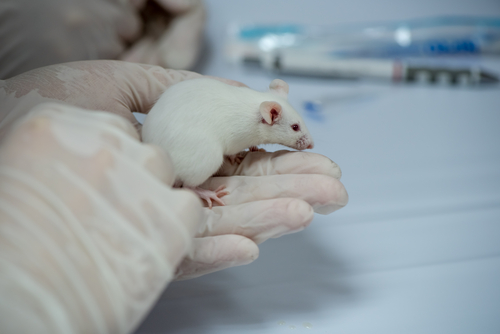Potential Link Found Between Sjögren’s- and Age-associated Dry Mouth

An accumulation of damaged, pro-inflammatory immune cells, called senescence-associated T-cells, in salivary glands likely underlies gland dysfunction and dry mouth symptoms commonly seen with aging and in Sjögren’s syndrome patients, a study in mice suggests.
Notably, this senescent T-cell buildup was found to be associated with an increased production of recruiting immune molecules by tissue cells.
These findings highlight senescence-associated T-cells as potential therapeutic targets for Sjögren’s syndrome, the researchers noted.
The study, “Chemokines Up-Regulated in Epithelial Cells Control Senescence-Associated T Cell Accumulation in Salivary Glands of Aged and Sjögren’s Syndrome Model Mice,” was published in the International Journal of Molecular Sciences.
Dry mouth, or xerostomia, is a hallmark symptom of Sjögren’s syndrome due to abnormal immune attacks against the salivary glands. It also frequently occurs in older people, especially women.
Previous studies have suggested that infiltration of certain immune cells into salivary glands, resulting in tissue destruction, are involved in both age- and Sjögren’s-related dry mouth.
Higher levels of senescence-associated T-cells, a type of aging-associated immune cell that produces large amounts of atypical pro-inflammatory molecules, have been suggested to be involved in age-related immune impairment, greater inflammation, and a higher risk of autoimmunity.
However, their potential role in age- and autoimmune-associated salivary gland inflammation and dry mouth remains unknown.
Now, a team of researchers in Japan provided strong evidence that these senescence-associated T-cells may contribute to salivary gland tissue destruction and a reduction in saliva production with age and in Sjögren’s patients.
The team found that senescence-associated T-cells accumulated inside the salivary glands of a mouse model of Sjögren’s and of aged mice, particularly females. Notably, aged mice also showed an abnormal buildup of B-cells, another type of immune cell involved in autoimmune diseases.
In addition, among immune-related molecules in salivary gland cells, CXCL13 exhibited the strongest increase with age, with cells of aged mice producing 15 times more CXCL13 than those of younger mice.
The CXCL13 chemokine is a major attractant immune molecule for B-cells, and its receptor, CXCR5, is found at the surface of both B-cells and senescence-associated T-cells.
Further analyses revealed a significantly higher migratory response of senescence-associated T-cells toward CXCL13 in aged mice, compared with younger mice. They also showed the presence of these immune cells around salivary gland cells.
The researchers found that, in a Sjögren’s mouse model, accumulation of senescence-associated T-cells may be driven by a different pair of immune molecules, the chemokine CXCL12 and its receptor CXCR4.
A previous study in this mouse model showed that higher levels of CXCL12 attracted and promoted greater buildup of a specific group of T-cells that may include senescence-associated T-cells, while CXCR4 is typically found at the surface of immune cells.
Similar to CXCR5, the team confirmed the presence of CXCR4 in senescence-associated T-cells collected from the spleens of both the Sjögren’s mouse model and aged mice. The spleen is involved in several processes, including the maturation of B- and T-cells.
“To the best of our knowledge, this is the first study to show that [increased production] of chemokines in epithelial cells of the salivary glands of aged and [Sjögren’s syndrome]-like model mice is a critical factor promoting B-cell and/or [senescence-associated T-cells] accumulation and subsequent tissue destruction,” the researchers wrote.
These findings highlighted that the accumulation of senescence-associated T-cells “may be a common [mechanism] of age- and autoimmune-related [salivary gland inflammation],” and that that these cells may serve as therapeutic targets for preventing or treating these conditions, the team added.
Further studies are needed to understand the underlying mechanisms of this senescence-associated T-cell buildup and of CXCL13 and CXCL12 overproduction in target tissue cells.
The team now plans to investigate the role of regulatory T-cells, a type of T-cell that dampens inflammatory and immune responses, in the development of age- and Sjögren’s-related salivary gland inflammation.






